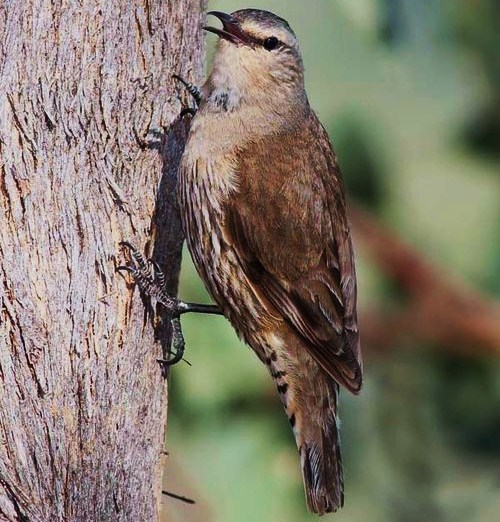Climacteris picumnus
 |
| (Photo from Wikipedia) |
Common name:
brown treecreeper (en); trepadeira-austral-castanha (pt); échelet brun (fr); corretroncos pardo (es); braunbaumrutscher (de)
Taxonomy:
Order Passeriformes
Family Climacteridae
Range:
This Australian species is found across eastern Australia, from northern Queensland south to Victoria and eastern South Australia.
Size:
This large treecreeper is 16-18 cm long and weighs 26-33 g.
Habitat:
Brown treecreepers are mostly found in eucalypt forests and other dry woodlands and savannas. They are also found in moist forests and dry scrublands.
Diet:
These birds forage on the trunk and branches of trees, probing into cavities and under loose bark in search of ants, moths, craneflies, spiders,butterfly and insect larvae.
Breeding:
Brown treecreepers breed in June-January. They are monogamous and sometimes breeding pairs are helped by the offspring from previous year. The nest is a collection of grasses, feathers and other soft material, placed in a hollow in a standing dead or live trees or in a tree stumps. There the female lays 2-3 eggs which she incubates alone for 17 days. The chicks are fed by both parents and by the helpers, fledging 26 days after hatching.
Conservation:
IUCN status – LC (Least Concern)
This species has a very large breeding range and is reported to be locally quite common. This population is suspected to be in decline owing to ongoing habitat loss and degradation caused by agricultural and urban expansion as well livestock grazing and firewood collection. Predation by feral cats and dogs may also be a problem for this species. However, overall the brown treecreeper is not considered threatened at present.







